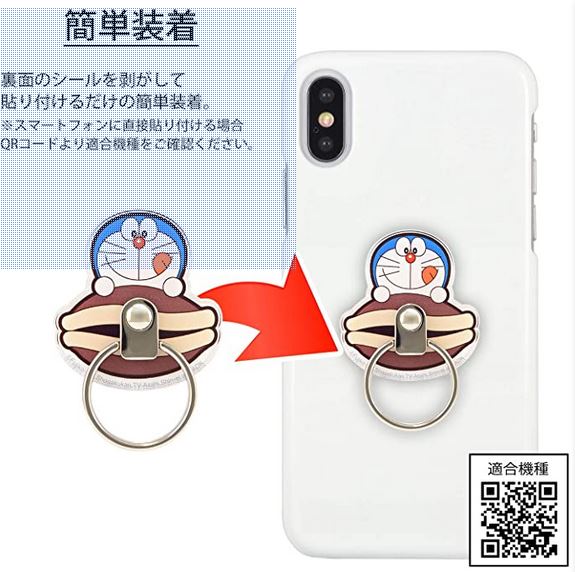In this Python Django Tutorial, I will show you how to perform union operation on models Django.
You will understand how to perform union operations on querysets that belong to the same model. Also, you will learn how to perform union operations on query sets that belong to different models.
Union operation on models Django
So ‘what is a union operation?’, from a mathematics point of view, suppose you have two sets A = [2,3 5,7] and B = [1,4,5,6]. To perform union between these sets, the symbol U is used like this ‘A’ U ‘B’.
The result of the union is a set [1,2,3,4,5,6,7] that contains all the elements from sets A and B except the duplicate.
If you see both sets, they have a common element which is 5 but this element is included only one time in the final set after performing the union operation.
Like that Django supports Set Operations that can be performed on the models. Set Operations are used to get meaningful results from the field stored in the models, under different special conditions.
Now, you will learn one of the Set Operations, called Union Operation. But where you will use the union operation in Django, well the answer is simple. You will use the union with Django Queryset.
Suppose you have a model related to the blog and you want to fetch the blog based on different categories. Then to combine these two separate queryset into a single queryset, use the union operation.
Now you can say union operation in Django allows us to combine multiple queryset into a single queryset.
The Union Operation can be applied on the same or different models. The fields and data types should match when querysets are from distinct models or even from the same model.
Also, check: How to Create model in Django
Union Operation on the Same Model Using Django
I hope that you have a clear understanding of what Union Operation is. Let’s now turn our attention to the practical implementation of union operations.
Let’s learn how to use the union operation on the same model
Before starting the demonstration, I’ll show you the model and explain how to create it. For that open the terminal and create a virtual environment named ‘env_union’.
python -m venv env_unionThen activate the environment using the below code.
env_union\Scripts\activateInstall the latest version of Django.
pip install djangoCreate a Django project named ‘django_union’ using the below code.
django-admin startproject django_unionChange the directory to django_union.
cd django_unionThen create a Django app named ‘union_app’ using the below code.
python manage.py startapp union_app
Now open the Django project in your preferred IDE such as Visual Studio Code.
Firstly, create the model named ‘Employee’ in the model.py file of the Django app ‘union_app’ and add the following lines of code.
from django.db import models
class Employee(models.Model):
first_name = models.CharField(max_length=200)
last_name = models.CharField(max_length=200)
position = models.CharField(max_length=100)
age = models.PositiveIntegerField()
def __str__(self):
return "%s %s %s %s" % (self.first_name, self.last_name, self.position, self.age) 
In the above code define the model named Employee with field lists first_name, last_name, position of type CharField and age of type PositiveIntegerField.
Next, register the Employee model by writing the below code in the admin.py file of your Django app ‘union_app’.
from django.contrib import admin
from .models import Employee
class AdminEmployee(admin.ModelAdmin):
list_display = ['first_name', 'last_name', 'position', 'age']
admin.site.register(Employee, AdminEmployee)
Include your app in the INSTALLED_APPS list in your setting.py file of the Django project ‘django_union’.
INSTALLED_APPS = [
'django.contrib.admin',
'django.contrib.auth',
'django.contrib.contenttypes',
'django.contrib.sessions',
'django.contrib.messages',
'django.contrib.staticfiles',
'union_app'
]
Now, run the below commands one by one to make a migration file.
python manage.py makemigrations
python manage.py migrate
Open the Python shell by writing the below command in your terminal.
python manage.py shell
Now use the below command in your Python shell and create some records related to the Employee.
from union_app.models import Employee
emp = Employee.objects.create(first_name = "Maria", last_name = "Ted", position = "Developer", age = "28")
You can use the above code to create multiple employee records in the database.
In this example, you will perform Union Operation on the same model. So write the below code in your terminal.
# Import
from union_app.models import Employee
# QuerySet
queryset1 = Employee.objects.filter(age__gt=28)
queryset1
queryset2 = Employee.objects.filter(first_name="Maria")
queryset2
# Union Operation
queryset1.union(queryset2)
In the above code first import the model Employee from the file models.py of your Django app ‘union_app’.
- Then retrieve all the employees from the database as queryset whose age is greater than 28 using the Employee.objects.filter(age__gt=28) where age__gt means age greater than.
- Again retrieve the employee objects whose first name is Maria using the Employee.objects.filter(first_name=”Maria”)
- Finally, the code queryset1.union(queryset2) performs the union operation on queryset1 and queryset2, and the result of the operation is a new queryset containing all unique Employee objects that either have an age greater than 28 or a first name equal to Maria.
Let’s take on more examples where you are going to perform Union Operation on Model Fileds position and last_name.
# Import
from union_app.models import Employee
# QuerySet
queryset1 = Employee.objects.filter(position="Vice President")
queryset1
queryset2 = Employee.objects.filter(last_name="Johnson")
queryset2
# Union Operation
queryset1.union(queryset2)
In the above code retrieving the records from the database using the filter() method based on the model field names such as Position is Vice President and Last_Name is Johnson.
- After that storing the retrieved querysets or objects to the corresponding variable queryset1 and queryset2.
- Finally, the code queryset2.union(queryset1) performs the union operation on queryset2 and queryset1, and the result of the operation is a new queryset containing all unique Employee objects that either have position Vice President or a last name equal to Johnson.
So, if you want to get the duplicate values, use the all=True parameter with the union operation as shown below.
# Union Operation
queryset1.union(queryset2, all=True)
Read: Python Django vs ReactJS
Union Operation on different models using Django
Now you know how to perform union operations on queryset that belong to the same model. But in this section, you will learn how to use Union Operation on the different models. To better understand the concept, we’ll look at some examples.
Before starting the demonstration, I’ll show you the models and explain how to create them.
Firstly, open the models.py file of your Django app ‘myApp’ and create a Customer model by adding the following lines of code.
from django.db import models
# Create your models here.
class Customer(models.Model):
Customer_Name = models.CharField(max_length=200)
Customer_Contact_Name = models.CharField(max_length=200)
Customer_Country = models.CharField(max_length=100)
Customer_City = models.CharField(max_length=100)
def __str__(self):
return "%s %s %s %s" % (self.Customer_Name, self.Customer_Contact_Name, self.Customer_Country, self.Customer_City) Next, we create a Supplier model.
from django.db import models
# Create your models here.
class Supplier(models.Model):
Supplier_Name = models.CharField(max_length=200)
Supplier_Contact_Name = models.CharField(max_length=200)
Supplier_Country = models.CharField(max_length=100)
Supplier_City = models.CharField(max_length=100)
def __str__(self):
return "%s %s %s %s" % (self.Supplier_Name, self.Supplier_Contact_Name, self.Supplier_Country, self.Supplier_City) 
In the above code from lines 12 to 19 define the model named ‘ Customer’ that contains the field list Customer_Name, Customer_Contact_Name, Customer_Country and Customer_City of type CharField.
After that from lines 21 to 28 define the model ‘Supplier’ with a field list Supplier_Name, Supplier_Contact_Name, Supplier_Country and Supplier_City of type CharField
After the successful creation of models, register all the models in the admin.py file of your Django app ‘myApp’.
from django.contrib import admin
from .models import Customer
from .models import Supplier
class AdminCustomer(admin.ModelAdmin):
list_display = ['Customer_Name', 'Customer_Contact_Name', 'Customer_Country', 'Customer_City']
class AdminSupplier(admin.ModelAdmin):
list_display = ['Supplier_Name', 'Supplier_Contact_Name', 'Supplier_Country', 'Supplier_City']
admin.site.register(Customer, AdminCustomer)
admin.site.register(Supplier, AdminSupplier)

Now take an example where you will learn how to perform union operations on querysets that belong to different models.
So run the following code in your Python shell.
# Import
from myApp.models.customer import Customer
from myApp.models.supplier import Supplier
# QuerySet
queryset1 = Customer.objects.filter(Customer_Country='UK')
queryset1
queryset2 = Supplier.objects.filter(Supplier_Country='UK')
queryset2
# Union Operation
queryset1.union(queryset2)
In the above code, line 3 retrieves all the customer objects from the database that belong to the country “UK”. Then in line 5 retrieve all the supplier objects from the database that belong to the country “UK”.
Finally, line 7 performs a union operation on queryset1 and queryset2 to combine the objects of both queryset into a new queryset that contains all the unique customer or supplier objects that have a country equal to “UK”.
Here you should notice that the queryset1 and queryset2 are from the different models.
Let’s take one more example where you will perform the union operation on querysets that come from different models but are based on the primary key value.
Open the Python Shell and perform the Union Operation on different models.
# Import
from myApp.models.customer import Customer
from myApp.models.supplier import Supplier
# QuerySet
queryset1 = Customer.objects.filter(pk__in=[1, 2])
queryset1
queryset2 = Supplier.objects.filter(pk__in=[3])
queryset2
# Union Operation
queryset2.union(queryset1)
The above code does the following things:
- Firstly we get the record from the Customer model on the basis of the filter’s primary key values by using the querysets.
- Then, we also get the record from the Supplier model on the basis of the filter primary key values by using the querysets.
- Next, we use the Union Operation to get the record by combining both querysets.
Read: Python Django format date
Limit the selected fields in Union Operation
In this section, you will learn what we mean by limiting the selected fields while performing Union Operation.
In Django, we can’t always perform union operations on querysets. The fact that querysets do not have the same columns and datatypes.
However, it’s possible in some cases that these models have certain common fields. As a result, in this situation, we limit the fields that are picked and then do a union operation. And, to do so we use the Django values_list argument.
Let’s see an example to understand the concept:
Before we start the demonstration, I’ll show you the models and explain how to create them.
Firstly, we create the EmpDetails model.
from django.db import models
# Create your models here.
class EmpDetails(models.Model):
Name = models.CharField(max_length=200)
Gender = models.CharField(max_length=20)
Position = models.CharField(max_length=100)
Country = models.CharField(max_length=100)
def __str__(self):
return "%s %s %s %s" % (self.Name, self.Gender, self.Position, self.Country) Next, we create the EmpSalary model.
from django.db import models
# Create your models here.
class EmpSalary(models.Model):
Name = models.CharField(max_length=200)
Gender = models.CharField(max_length=20)
Salary = models.FloatField()
def __str__(self):
return "%s %s %s" % (self.Name, self.Gender, self.Salary)
After the successful creation of models, register the model in the admin.py file of your Django app ‘myAPP’.
from django.contrib import admin
from .models import EmpDetails
from .models import EmpSalary
# Register your models here.
class AdminEmpDetails(admin.ModelAdmin):
list_display = ['Name', 'Gender', 'Position', 'Country']
class AdminEmpSalary(admin.ModelAdmin):
list_display = ['Name', 'Gender', 'Salary']
admin.site.register(EmpDetails, AdminEmpDetails)
admin.site.register(EmpSalary, AdminEmpSalary)
Now let’s see with an example how to perform the union operation on querysets that are based limited field.
So run the following code in your Python shell.
# Import
from myApp.models.empdetails import EmpDetails
from myApp.models.empsalary import EmpSalary
# QuerySet
queryset1 = EmpDetails.objects.all()
queryset1
queryset2 = EmpSalary.objects.all()
queryset2
# Union Operation
queryset2.union(queryset1)

In the above code
- firstly we get all the records from the EmpDetails model by using the querysets.
- Then, we also get all the records from the EmpSalary model by using the querysets.
- Next, we use the Union Operation to get all records by combining both querysets. But, we get an error.
Now, to resolve this error we can use the values_list parameter of Django to limit the selected fields and after that perform a union operation.
# Import
from myApp.models.empdetails import EmpDetails
from myApp.models.empsalary import EmpSalary
# QuerySet
queryset1 = EmpDetails.objects.values_list("Name", "Gender")
queryset1
queryset2 = EmpSalary.objects.values_list("Name","Gender")
queryset2
# Union Operation
queryset2.union(queryset1)
Conclusion
In this Django Tutorial, we have discussed “Union operation on models Django” and we have also discussed the following topics in this tutorial.
You may also like to read the following Python Django tutorials.
- Python Change Django Version
- Python Django vs Pyramid
- Get URL parameters in Django
- Django CRUD example with PostgreSQL

facebook 查詢:
24 hours enquiry facebook channel :
https://www.facebook.com/itteacheritfreelance/?ref=aymt_homepage_panel



Leave a Reply